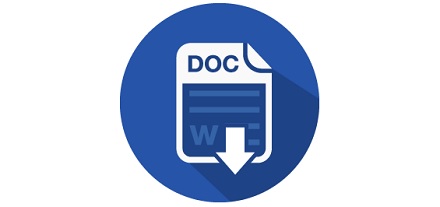Instructing a model of inclusive Islamic education
DOI:
https://doi.org/10.33474/jemois.v1i1.10096Abstrak
Islamic religious education, including subjects that must be given to students who are Muslim, even though these students study at non-Islamic schools. Likewise, on the other hand, Islamic schools must also facilitate religious education in accordance with the religions of their students. Santo Paulus Catholic High School Jember, including a school that facilitates Islamic religious education for Muslim students. Uniquely, there is a religiosity subject, which includes all universal values in the official religion in Indonesia. The focus of this research is, how is the portrait and dynamics of Islamic religious education in non-Muslim schools (Catholic schools)? In this context, the authors chose a qualitative approach in data mining and processing. Interviews, document studies, observation, data research are the techniques chosen in research data collection. The research findings: 1) SMA Catholic Santo Paulus Jember has 6 Islamic religious education teachers, but they are not in accordance with the qualifications of the subjects they are teaching, 2) apart from PAI subjects, SMA Catholic Santo Paulus Jember strengthens students with religiosity lessons, namely lessons which includes universal values of all religions, 3) SMA Catholic Santo Paulus Jember is in demand by students from the six official religions in Indonesia.
Referensi
Law No. 4/1997 Article 1, paragraph 1
Law No. 4/1997 on the disabled Article 5
O’Neil. 1995. Inclusion Can Work? A Conversation with James
Kuffman and Mara Sapon-Shevin.Educational Leadership
(4) 7-11
National Education Minister Regulation No. 70 Year 2009 Article 2
National Education Minister Regulation No. 70 Year 2009 on Inclusive Education For Students Who Have Potential Intelligence abnormalities and / or Talent Special Article 1
Rudiyati, Sari 2011. Inclusive Schools portrait in Indonesia. (Paper presented in the Seminar General “Choosing the Right School for Children with Special Needs†at the National Meeting and Adolescent Mental Health Association (AKESWARI) on May 5, 2011 at INA Garuda Yogyakarta)
Staub, D., & Peck, C.A, (1994/195). What are the outcomes for nondisabled students? Educational Leadership. 52 (4) 36-
Stubs, S. 2002. Inclusive Education Where There Are Few Resources.
Oslo: The Atlas Alliance
Santoso, Fattah (2005). “School of Shari’ah and inclusive educationâ€.
National Seminar Papers and launch of Shariah school curriculum and guide the implementation of the inclusive education of UNESCO, UNS.
The Salamanca Statement and Framework for Action on Special
Needs Education. Salamanca: Unesco and Ministry Of
Education And Science, Spain.
Unesco. 1994 Final report: World confrerence on special education
needs: acces and quality. Paris: Unesco.
Unesco. 2006. What is Inclusive Education ?. retrieved on September
, 2015 from: http://www.unescobkk.org/education/- appeal/programme-themes/inclusive-education/what-is- ie/
Vernor Munoz. 2007. The right to education of persons with disabilities.United Nations General Assembly Resolution
/251, March 15, 2006.
Unduhan
Diterbitkan
Terbitan
Bagian
Lisensi
Authors who publish with this journal agree to the following terms:
- Authors retain copyright and grant the journal right of first publication with the work simultaneously licensed under a Creative Commons Attribution 4.0 International License. that allows others to share the work with an acknowledgement of the work's authorship and initial publication in this journal.
- Authors are able to enter into separate, additional contractual arrangements for the non-exclusive distribution of the journal's published version of the work (e.g., post it to an institutional repository or publish it in a book), with an acknowledgement of its initial publication in this journal.
- Authors are permitted and encouraged to post their work online (e.g., in institutional repositories or on their website) prior to and during the submission process, as it can lead to productive exchanges, as well as earlier and greater citation of published work.



.png)




